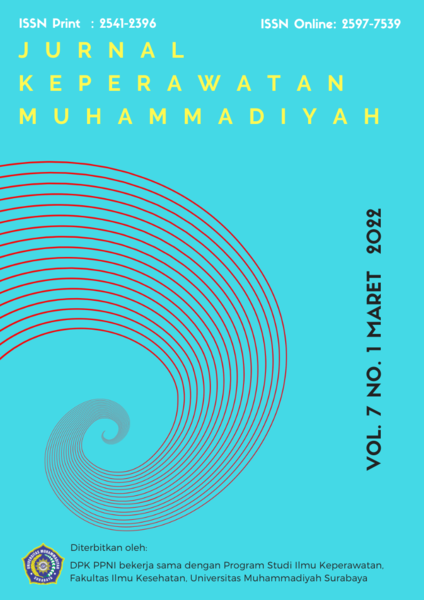The Different Effect Of Wobble Board Exercise And Elastic Resistant Band Exercise On Stabilization Of The Ankle Joint In The Case Of Ankle Sprain
DOI:
https://doi.org/10.30651/jkm.v7i1.10918Keywords:
wobble board, elastic resistant band, sprain ankleAbstract
Objective: To identify that proprioceptive training using a wobble board is different from ankle muscle strengthening training using elastic resistance rubber in reducing foot and ankle disability in cases of chronic ankle sprains.
Methods: Â This article is used an experimental method, to see the difference between wobble board exercise and ankle muscle strengthening training using elastic resistance rubber in reducing foot and ankle disability in cases of chronic ankle sprains. The first treatment group was wobble board exercise and Group II was ankle muscle strengthening training using elastic resistance rubber. FADI measurements were carried out before and after treatment with a pre-test and post-test group design.
Results: Â exercises using Wobble Board and Elastic Resistant Band have differences, they can be used to reduce foot and ankle disability according to needs by taking into account age, tissue conditions, workload, and position at work.
Conclusion:  Proprioceptive training with a wooble board can reduce foot and ankle disability in cases of chronic ankle sprains with values before 25.90+ 15.56 and after treatment 6.60 + 5.03. Ankle muscle strengthening training with elastic resistance rubber can reduce foot and ankle disability in chronic ankle sprain cases with a value before treatment 44.90 + 18.80 after treatment 13.80 +10,30. Differences in proprioceptive training using a wooble board with ankle muscle strengthening training with elastic resistance rubber in reducing foot and ankle disability in cases of chronic ankle sprains with a difference of 19.30±12.57 in Group I and 31.10±12,19 in Group II.References
Chan, K. W., Ding, B. C., & Mroczek, K. J. (2011). Acute and chronic lateral ankle instability in the athlete. Bulletin of the NYU Hospital for Joint Diseases, 69(1), 17.
Khairunnisa, I., & Fitriana, N. F. (2020). Pengaruh Penkes Dan Simulasi P3K Terhadap Pengetahuan dan Keterampilan Menangani Cedera Ankle Strain Pada Anggota Taekwondo. Jurnal Keperawatan Muhammadiyah.
Kim, H., Chung, E., & Lee, B.-H. (2013). A comparison of the foot and ankle condition between elite athletes and non-athletes. Journal of Physical Therapy Science, 25(10), 1269–1272.
Kisner, C, & Colby, L. A. (2012). Therapeutic Exercise: Foundation and techniques 6 th edition, FA Davis Company. USA.
Kisner, Carolyn, & Colby, L. A. (2016). Terapi Latihan Dasar dan Teknik.
Miller Jude, A. (2011). Proprioceptive Training & Its Implications on Ankle Rehabilitation.
Needle, A. R., Charles B, S., Farquhar, W. B., Thomas, S. J., Rose, W. C., & Kaminski, T. W. (2013). Muscle spindle traffic in functionally unstable ankles during ligamentous stress. Journal of Athletic Training, 48(2), 192–202.
O’Driscoll, J., & Delahunt, E. (2011). Neuromuscular training to enhance sensorimotor and functional deficits in subjects with chronic ankle instability: a systematic review and best evidence synthesis. Sports Medicine, Arthroscopy, Rehabilitation, Therapy & Technology, 3(1), 1–20.
van der Wees, P. J., Lenssen, A. F., Hendriks, E. J. M., Stomp, D. J., Dekker, J., & de Bie, R. A. (2006). Effectiveness of exercise therapy and manual mobilisation in acute ankle sprain and functional instability: a systematic review. Australian Journal of Physiotherapy, 52(1), 27–37.
Downloads
Published
Issue
Section
License
- Penulis tetap memegang hak atas karyanya dan memberikan hak publikasi pertama kepada jurnal ini yang secara simultan karya tersebut dilisensikan di bawah:Â Creative Commons Attribution-ShareAlike 4.0 International (CC BY-SA 4.0)













